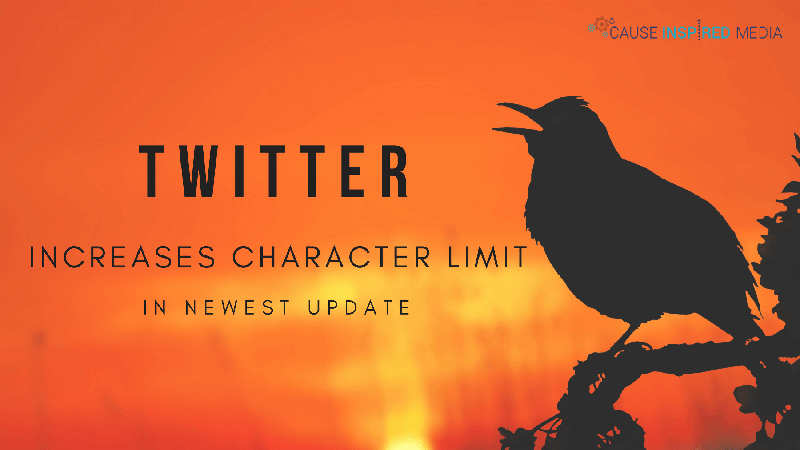Twitter Increases Character Limit in Newest Update
Earlier this month, Twitter announced that it will be increasing its character limit from 140 to 280 for all of its users. If you are active on the popular micro-blogging platform, you may have already seen a select few accounts using the higher limit. This is because Twitter began testing this idea back in September, 2017, which was not short of criticism at the time.
Back  in 2007, at the company’s inception, Twitter set their 140 character limit as a “nod” to the early character restrictions placed on text messages (SMS had a 160-character limit at the time, and twitter wanted to allow users to post messages using their mobile device with enough room to include their username). Since then, their 140 character limit has become a hallmark of Twitter’s services. Many users gravitate to Twitter as opposed to other social media sites because the character limit encourages linguistic creativity without forcing users to spend time reading through long, drawn-out opinions or conversations.
in 2007, at the company’s inception, Twitter set their 140 character limit as a “nod” to the early character restrictions placed on text messages (SMS had a 160-character limit at the time, and twitter wanted to allow users to post messages using their mobile device with enough room to include their username). Since then, their 140 character limit has become a hallmark of Twitter’s services. Many users gravitate to Twitter as opposed to other social media sites because the character limit encourages linguistic creativity without forcing users to spend time reading through long, drawn-out opinions or conversations.
With the recent popularity of blogging, however, Twitter has felt a strong pull to become a place where people can discuss more than just “bite-sized” thoughts, but complex ideas and opinions. According to the Washington Post, in September, Twitter announced that they would be “testing a new upper limit because languages such as English couldn’t pack as much information into 140 characters as other languages, such as Chinese, Japanese or Korean, which can use characters that denote whole words.”
But the change has come with heavy criticism from twitter users across the globe. Many feel that by increasing the character limit, Twitter has removed the incentive for users to be creative in their wording. Many have suggested that the new limit is both too long to be brief, but still too short to convey meaning. World famous author and Twitter user, J.K. Rowling tweeted that she felt “Twitter’s destroyed it’s USP. The whole point, for me, was how inventive people could be within that concise framework.” Her opinion clearly resonated with many Twitter users, garnering over 150,000 re-tweets and likes.

Many offered more constructive criticism by suggesting what Twitter could have done differently. Some twitter accounts suggested that Twitter should have added an “edit” button, instead of the character limit. Others thought that Twitter should have only increased the character limit by 5-10, rather than doubling it.
However, despite the criticism, Twitter continues to stand by its choice to increase the limit. Twitter CEO, Jack Dorsey tweeted in his announcement that he was “proud of how thoughtful the team has been in solving a real problem people have when trying to tweet. And at the same time maintaining our brevity, speed, and essence!” Twitter Project Manager, Aliza Rosen explains that Twitter’s main motivation in the increase was to allow everyone, not just those tweeting in languages like Japanese, Korean, and Chinese, the ability to easily express themselves without having to remove important details. In doing so, they hope to achieve their goal of eliminating “what it viewed as constraints that kept people from tweeting,” the New York Times reported. Rosen continues to describe how only 0.4% of all tweets in Japanese reach the 140 limit, compared 9% of tweets in English. Furthermore, the majority of tweets in Japanese are 15 characters, while most tweets in English are 34. Twitter clearly believes that these discrepancies are enough to warrant the change.
Regardless of public opinion, Twitter has moved forward with their increased character limit, and at this point, it looks as if it’s here to stay. If you have any questions about how the increase will impact your social media strategy, contact us! We’re always happy to help our nonprofit clients with digital marketing, and social media solutions!
By: Emily Dietz, Strategic Planning & Operations Manager















